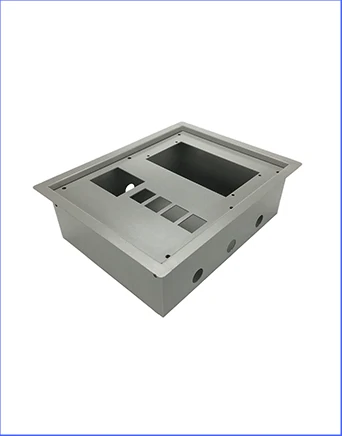Time to read: 6 min

Sheet metal fabrication is an essential process in various industries, offering versatility in creating complex designs with different metals. This guide provides a comprehensive overview of sheet metal design principles, fabrication techniques, and best practices to ensure precision and efficiency in your projects.
Understanding Sheet Metal Fabrication
Sheet metal fabrication involves transforming thin metal sheets into functional parts through processes like cutting, bending, and forming. It's widely used in construction, automotive, aerospace, and more for its strength and lightweight properties.
The Fundamentals of Sheet Metal Design
A successful sheet metal fabrication project hinges on a solid grasp of design principles, including material selection, geometric constraints, and cost-effective strategies.
Material Selection
Choose from various metals like stainless steel, aluminum, copper, and their alloys, each with unique properties affecting manufacturability and performance.
Geometric Constraints
Consider factors such as wall thickness, offsets, curls, bends, and hems, which are crucial for achieving the desired form and function of the part.
Cost-Effective Design Strategies
Optimize your design to minimize material waste and production time, without compromising on quality and durability.
Main Fabrication Techniques
Sheet metal fabrication relies on forming and cutting techniques, each with its methods:
Cutting
Techniques include laser, plasma, and water jet cutting, chosen based on precision needs and material type.
Bending
Bending involves applying force to sheet metal to achieve the desired shape, with considerations for bend line, radius, angle, and neutral axis.
Stamping
A complex process combining shearing, bending, and stretching to form new shapes from sheet metal.
Punching
Used for creating holes or cutouts in the sheet metal, often integrated with stamping processes.
Advantages and Limitations
Sheet metal fabrication offers quick turnaround, high-quality parts, and versatility across metals. However, it requires significant tooling investment and skilled labor.
Design Guidelines
Follow best practices for sheet metal fabrication design:
Tolerances
Adhere to industry standards like ISO 2768 for dimensional tolerances.
Forming Basics
Understand the integral parameters for sheet metal bending, including bend allowance, K-factor, and bend radius.
Cutting Basics
Consider material characteristics, hole diameter, and potential for localized hardening and distortion during cutting.
Common Features
Incorporate features like corner fillets, ribs, embossments, round bosses, dimples, louvers, and round knockouts, considering their impact on manufacturability and strength.
Avoiding Common Design Mistakes
Being aware of common design errors can prevent costly reworks:
CAD File Oversights
Ensure CAD files include bends and necessary details for hardware and features.
Material and Finish Selection
Choose suitable materials and finishes based on the application's environmental and performance requirements.
Welding and Joint Considerations
Design with achievable welding requirements and consider the strength of materials for structural elements like U channels.
Types of Sheet Metals and Finishes
Explore the range of sheet metals and common finishes to enhance appearance and durability.
Unofactory: Your Partner in Sheet Metal Fabrication
Unofactory offers comprehensive services from DFM analysis to production, ensuring your sheet metal parts meet the highest quality standards and are delivered on time and budget.
Conclusion
A well-designed sheet metal fabrication project can lead to high-quality, precision parts that meet industry requirements. By following this guide, you can optimize your design for manufacturability and achieve a successful fabrication outcome.




